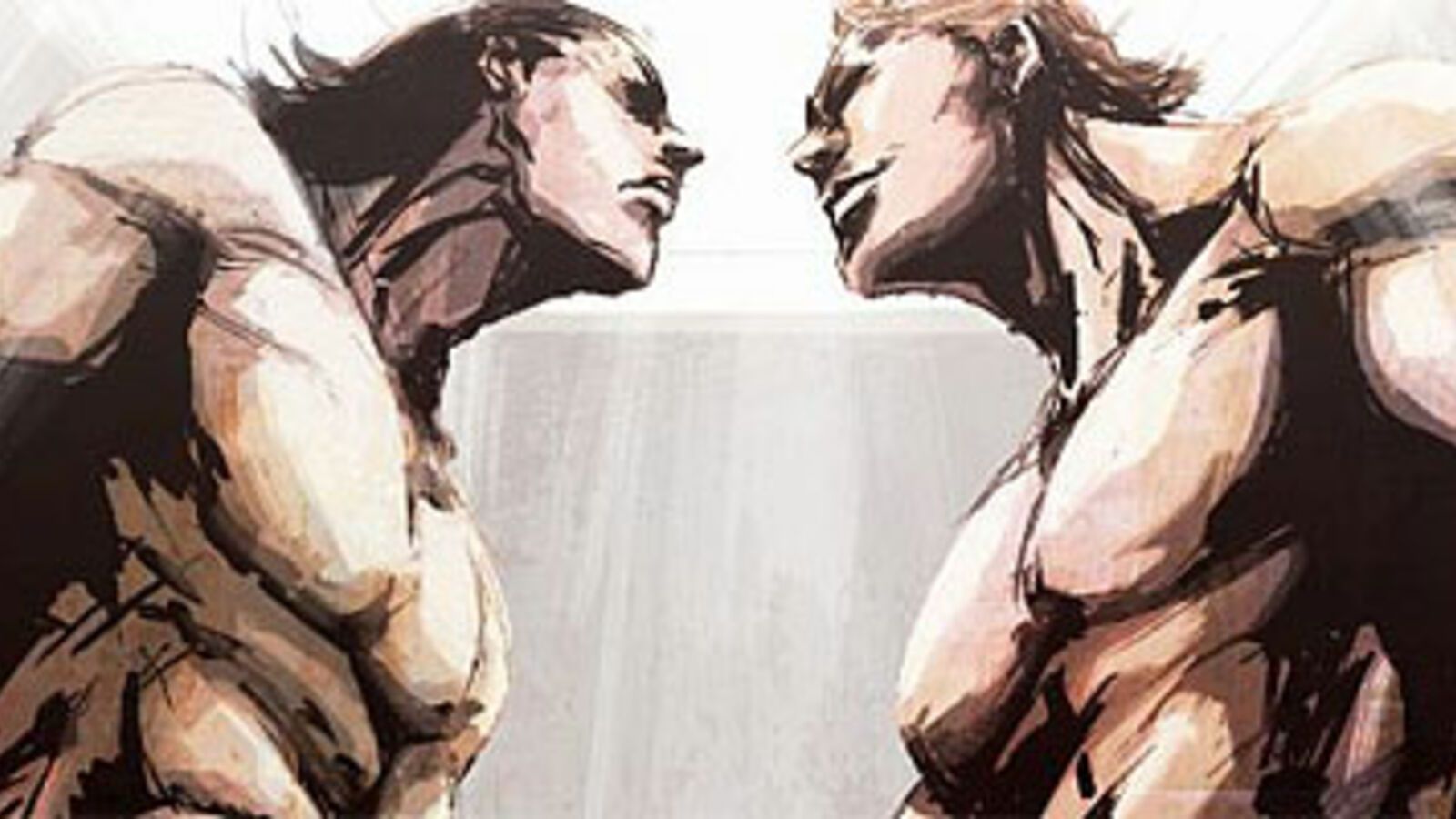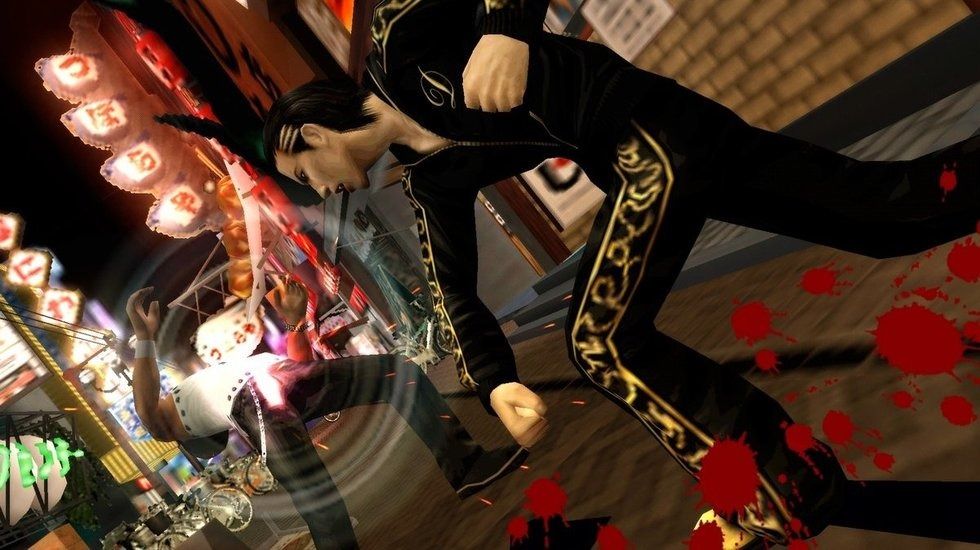Exploring Kurohyou, Yakuza’s PSP-Exclusive Spinoff Series
What happens when Def Jam meets Yakuza

As with most successful video game franchises, it should come as no surprise that Yakuza has its fair share of spinoff entries. Apart from the more recent Judgment series, Ryu Ga Gotoku Studio has experimented with a feudal Japan setting in Ryu Ga Gotoku Kenzan (2008) and Ryu Ga Gotoku Ishin (2014). Then there was the time the studio tried to cash in on the zombie genre craze that took over gaming in the early 2010s, marked by the release of Yakuza: Dead Souls (2011).
However, not a lot of people—even fans of the Yakuza series—have talked about Kurohyou.
Also known as Yakuza Black Panther, Kurohyou is a Yakuza spinoff series released exclusively in Japan for the PSP. Two games have been released: Kurohyō: Ryū ga Gotoku Shinshō was released in 2010, while its sequel Kurohyō 2: Ryū ga Gotoku Ashura hen was released in 2012. Interestingly, the Kurohyo games were not solely developed by SEGA. Instead, the two games were developed in collaboration with Syn Sophia, the studio behind the Def Jam fighting game series.
Instead of longtime protagonist Kazuma Kiryu, Kurohyou players take on the role of an 18-year-old street punk named Tatsuya Ukyo. After accidentally killing a Tojo clan member, Ukyo is forced to win 10 consecutive matches in an underground fighting circuit based in Kamurocho known as the Dragon Heat. Ukyo also returns as the main playable character in the sequel, where he confronts another underground fighting circuit based in Sotenbori known as Ashura, which has plans to take over Dragon Heat.
Due to Ukyo being not heavily associated with the Tojo clan (whereas Kiryu is), both Kurohyou games are not focused on the Japanese criminal underworld involving the yakuza or other criminal organizations. However, intricate conspiracies with power players and string pullers still make a big part of the two games’ storylines, something that most Yakuza fans will feel at home with. Ukyo himself also experienced character development over the course of the two games, growing from an aimless street hoodlum to a determined and formidable hand-to-hand fighter.
As with all Yakuza games, players still get to explore the streets of Kamurocho (and Sotenbori in the sequel) on foot, discovering activities and engaging in near-unprovoked street fights. And like all Yakuza games, fighting still takes a big chunk of gameplay in Kurohyou, albeit with different mechanics.
Kurohyou’s brawling system puts more focus on one-on-one brawling, evidenced by a tighter camera angle from a tighter side perspective compared to the other games’ wider angle over the arena. Despite this, Ukyo can still engage more than one enemy in a single fight.
A unique aspect of Kurohyou’s battle system is the stamina mechanic, where Ukyo and his enemies can run out of stamina during battle. If that happens, Ukyo will stop and catch his breath, rendering him vulnerable. Stamina is depleted when performing offensive actions such as punching, kicking, and dodging; conversely, stamina can be replenished by standing still.

Kurohyou takes a more indirect approach to health management in combat. There is no health meter in the UI (although players can peek at their health in the pause menu). Instead, players can look for visual clues to Ukyo’s health during battle, such as a red flashing overlay at the screen corners indicating health halfway down.
Health is not the only aspect of well-being that players should look out for during battle, though; Ukyo can deal (and receive) damage to individual limbs, divided into four parts: head, torso, legs, and arms. Injured limbs can affect a fighter’s condition significantly; for instance, a fighter’s block is easier to break if his arms are severely damaged. This mechanic allows Ukyo to target and disable certain aspects of his enemies’ defense. At the same time, he can suffer injuries or fractures that can only be healed outside of combat, like at the hospital or a drugstore.
Kurohyou was also the first Yakuza game to introduce multiple fighting styles tied to a single Yakuza protagonist, well before Yakuza 0 and Yakuza Kiwami did the same. Throughout the game, Ukyo can learn and develop multiple fighting styles, with some bolstering certain attributes of Ukyo’s gameplay such as punching, kicking, and grappling.
The various styles on offer range from popular ones such as boxing, muay thai, and karate, to more unique styles such as pankration, bajiquan, and sumo wrestling. Throw in some hilariously overpowered self-taught styles such as ‘extreme god-like legs’ and ‘extreme instant death’ and players have a lot to enjoy in the game's combat.

Every fighting style available to Ukyo is unique not only in their punching and kicking combos, but in their finishing moves, the ‘heat actions’ exemplary of the Yakuza series. No matter which fighting style Ukyo chooses, all their heat actions are satisfying to execute thanks to flashy animations and crunchy sound design. Not to mention Ukyo yelling “ikuzo kora!” (“let’s go!”) every time he deals the finishing blow with these heat actions, seeming to make each of Ukyo’s decisive blows feel amplified by these elements.
In the same vein as Def Jam’s ‘blazing’ finishers, these heat actions truly showcase Syn Sophia’s hand in developing the game, with the display of exhilarating takedowns brought to life by creative animations. Not to mention the general approach to combat that can be described as deliberate without sacrificing pace and excitement, it can be said that Kurohyou is what happens Yakuza meets Def Jam. It also doesn’t hurt that the art style between the two games is quite similar, not to mention some animations that were taken straight from Def Jam: Fight for NY.
With (almost) all said about the combat, the Kurohyou games are still Yakuza games first and foremost, where players get to enjoy leisurely activities on the open world maps. The map of Kamurocho and Sotenbori are rife with minigames such as karaoke and various casino games. Players can also engage in hostess club activities, a staple of most Yakuza games.
The final piece of the puzzle is the music that hypes up the in-game battles. While solid all around, it was the final battle in Kurohyou 2 that managed to showcase the two games’ sound design in its full glory. Fun fact, the band behind Kurohyou 2’s final battle theme would go on to compose the Japanese theme song for Yakuza 0 (2015) and Yakuza: Like a Dragon (2020).
All of this sets up Kurohyou to be an exciting Yakuza experience, so why is this series largely unknown in the west, even after Yakuza’s rise to fame?

It's not just that the Kurohyou games are exclusive to the PSP, but they are only available in Japan, in Japanese, without any western localizations. This made the series relatively hard to access, especially for those only recently roped into the Yakuza series thanks to Yakuza 0.
There might be hope for those interested in diving into Ukyo’s story, however. An English patch for Kurohyou 2 was released in January 2022, and the team behind the English localization is currently working on a Kurohyou English patch with a projected 2022 release date. Both games can also be accessed via emulators, so it does seem like players might be able to fully experience Ukyo’s story, after all, hopefully, sooner rather than later.
Despite these positive developments, it is still unlikely for Kurohyou to get another sequel (or a remaster for that matter). That being said, increased exposure to Ukyo’s story might just bring him back in some shape or form to future Yakuza and/or Judgment games.
After all, Ukyo is still a young man, being ‘only’ 28 years old by the time of Lost Judgment, which was set in late 2021. Even with all that, he still has room for more development, be it character or skill-wise.
In the meantime, fans can still enjoy Ukyo’s adventure in Kurohyou 2, which was thankfully made more accessible by the aforementioned localization patch.
Although this is nothing more than wishful thinking, here’s hoping a certain street-punk-looking kid with a slicked-back undercut hairstyle appears as one of Ichiban Kasuga’s party members. Or better yet, as a rookie investigator for the Yagami Detective Agency, where he can flex his versatile fighting style prowess to the already-adept Takayuki Yagami.
In other words, here’s hoping for the return of the Mad Dragon of Kamuro!
